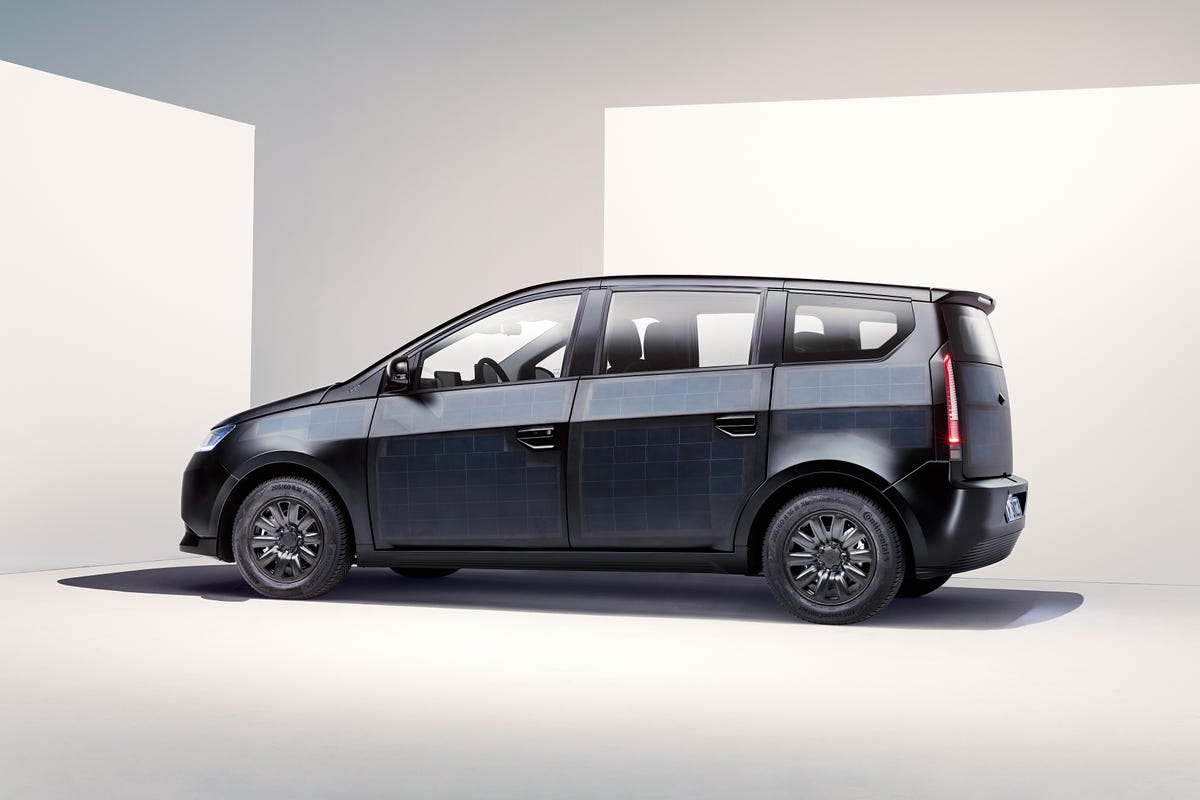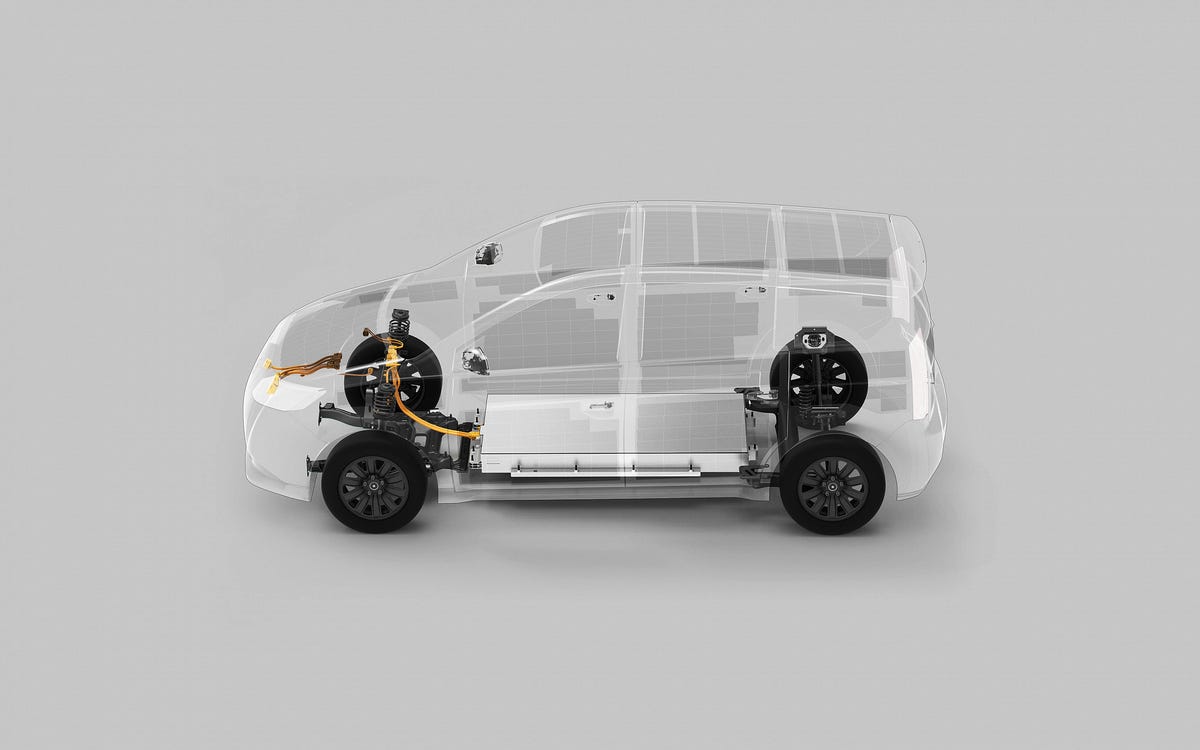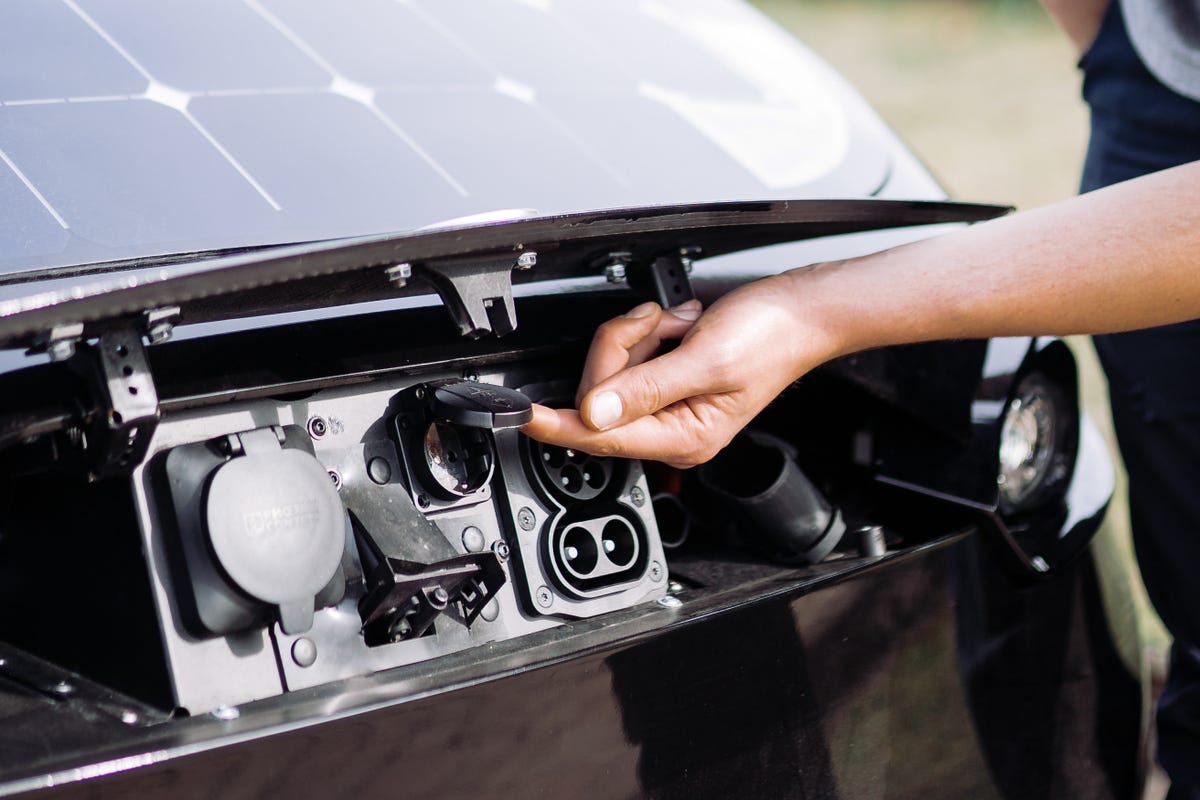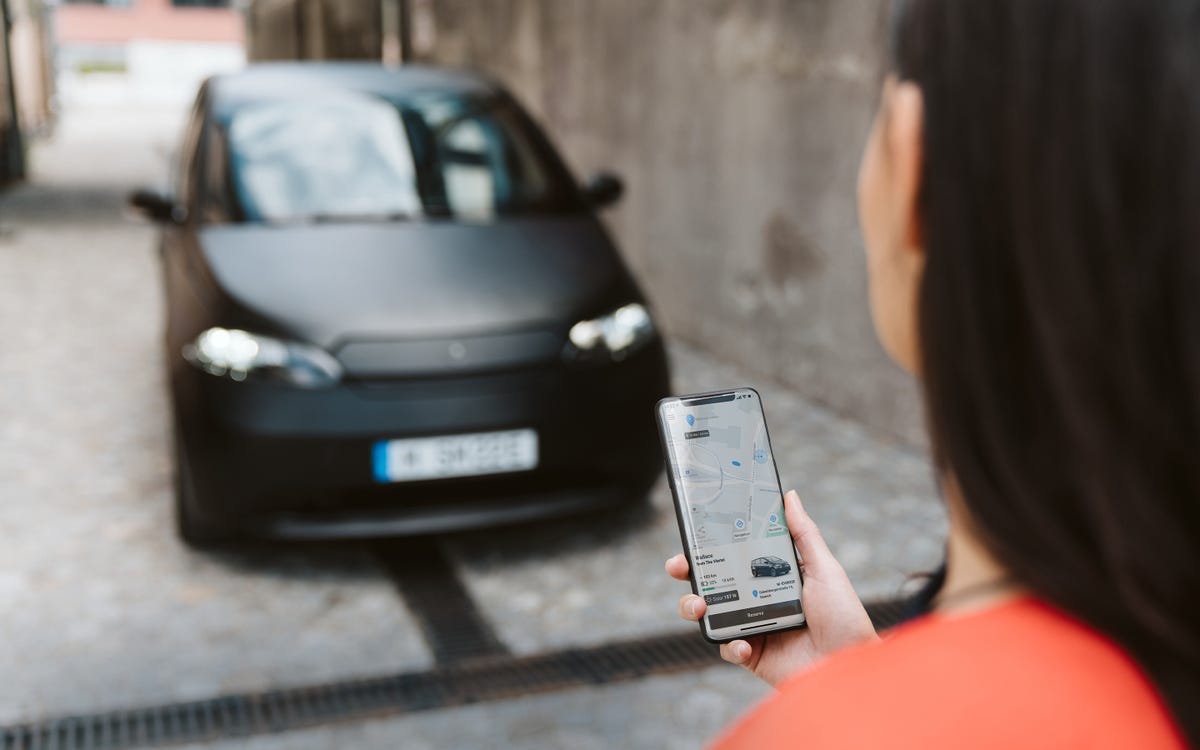This story is part of Plugged In, CNET’s hub for all things EV and the future of electrified mobility. From vehicle reviews to helpful hints and the latest industry news, we’ve got you covered.
German carmaker Sono says its Zion solar electric car will be coming to the US, prompting a lot of questions about what solar cars can do. I checked out a Zion in person during its first US tour and found that the answers are more nuanced than with a big-battery Tesla or a Hyundai Ioniq5 that has trivial solar charging.
Range and where it comes from
The Sion promises 190 miles of range on a charge, but that isn’t all solar range: The sun can account for about 5,400 miles a years, which averages out to 70 to 150 miles per week or 10 to 20 miles a day. That’s less than many Americans drive and even that amount of solar range wouldn’t be evenly distributed across all days because of weather, seasonality and where you park, the solar car equivalent of carefully sitting rooftop solar for viability. When the car comes to the US it will have a solar position feature in its app to predict the amount of charge you’ll get in a given parking space.

The exterior of the Sono Sion is almost completely made of polymer panels with integrated solar cells.
Sono Motors
For most drivers, solar will be a free, completely green contributor to conventional plug-in charging, not an obviation of it. However, if you drive only very local trips — or dedicated this car to them while using another car for longer driving — this car could have a profound role in your transportation footprint.
How the Zion works
The Sion is plastered in solar panels, not just on the roof as a few other cars already have, but also on the hood and the car’s sides. The solar panels aren’t slapped onto existing metal bodywork but integrated into its dentproof polymer body panels. As a result, the car can’t have a shiny paint job or range of colors, but Sono says production models will at least be an even shade of matte-gray-black, which happens to be a fashionable look these days.

The Sono Sion’s battery holds 54 kilowatt hours of capacity and is arranged in the proven skateboard design under the floor of the car.
Sono Motors
The solar bodywork feeds a pretty average sized 54-kWh lithium-ion phosphate battery whose chemistry is particularly adequate at handling numerous charge and discharge cycles. The stored power goes to a 163-hp motor that drives the front wheels to move the 3,800-pound car.
Ignoring the solar tech
The Sion can charge to 80% of its 190 miles of range in about 30 minutes on a DC fast charger and in a few hours via a Level 2 connection – all garden variety stuff seen in most EVs. You could own this car and never care about its solar technology, which may seem odd until you realize that its promised $25,000 MSRP would make it one of the cheapest ways to get into an EV, period. It won’t qualify for a $7,500 federal tax credit due to being assembled outside of North America.
Other tricks
Sono touts the Zion’s ability to output power to your home during a blackout which isn’t unheard of in EVs but is more interesting from a car that costs about the same as the average home battery install, setting up a potential argument that the Sion represents a free home backup system or a free electric car, depending on how you look at it.

The Zion’s ability to power your home via its bidirectional feed might, coupled with its $25,000 planned MSRP, might be more compelling than its solar charge ability.
Sono Motors
The Zion also has connectivity that allows sharing it with others keylessly, earning you a little money when you aren’t driving. I doubt the appeal of such programs in the US market, but it probably costs relatively little for Sono to enable it in their cars here and it makes sharing with family members a little more convenient.

The Zion has built-in car-sharing to earn you a little money and to increase the car’s green attributes via higher vehicle utilization.
Sono Motors
What to make of this solar car
It’s a bit of conundrum: Drivers in highly urbanized areas might be able to do all of their driving within the car’s solar range, but they’d also be the drivers with the most compromised access to sunlight, due to concrete canyons and parking garages. The car’s sharing ability can create high daily utilization, a holy grail for all future vehicle efficiency, but that could relegate the car’s limited solar range to a footnote of its weekly usage.
The Sono Zion is a car worth watching on its path to US availability. Its solar story isn’t a slam dunk for most US drivers but its promised low price and home powering ability recast the entire vehicle as something more compelling than just a solar car. It’s also an interesting step toward the holy grail of EV adoption: When parking equals charging.
